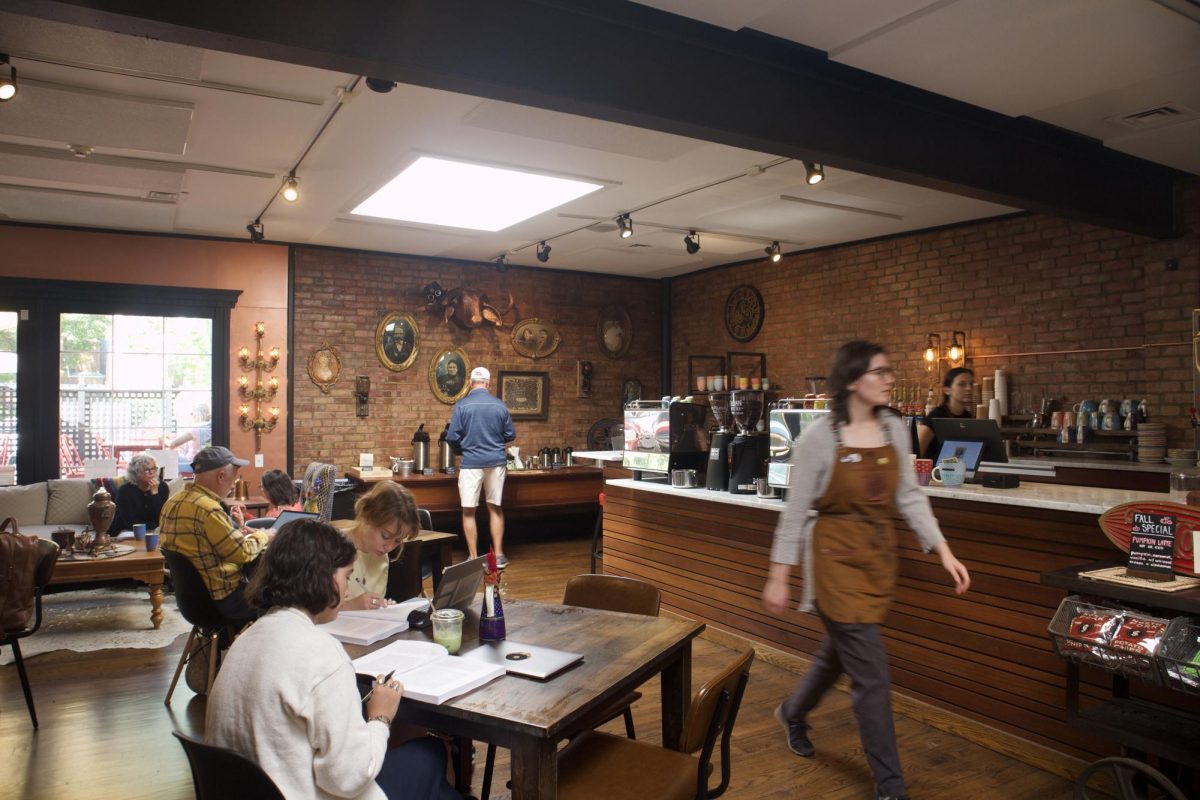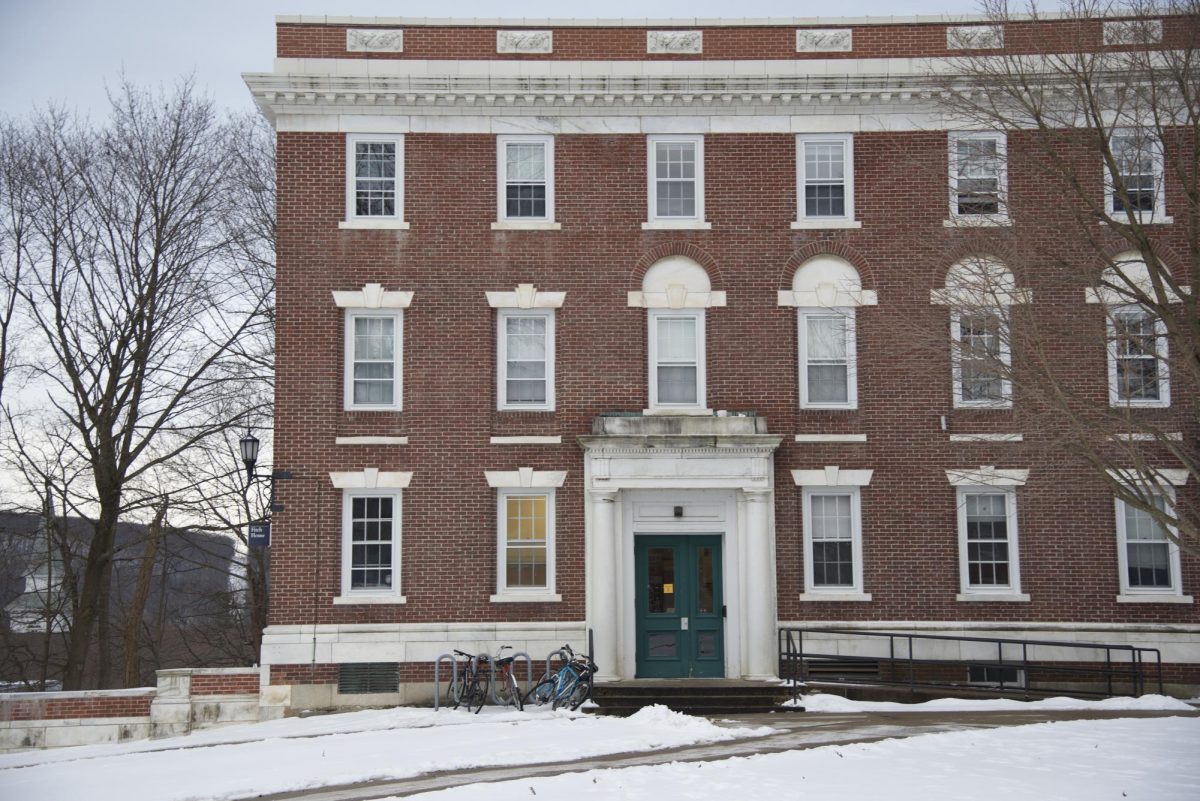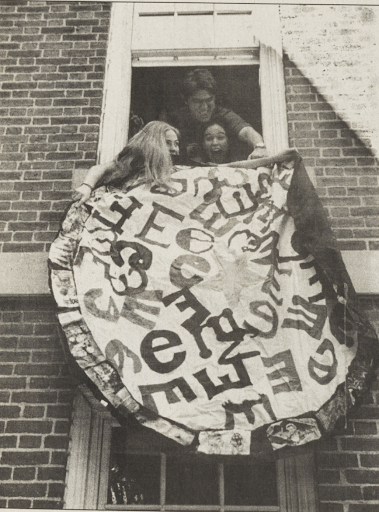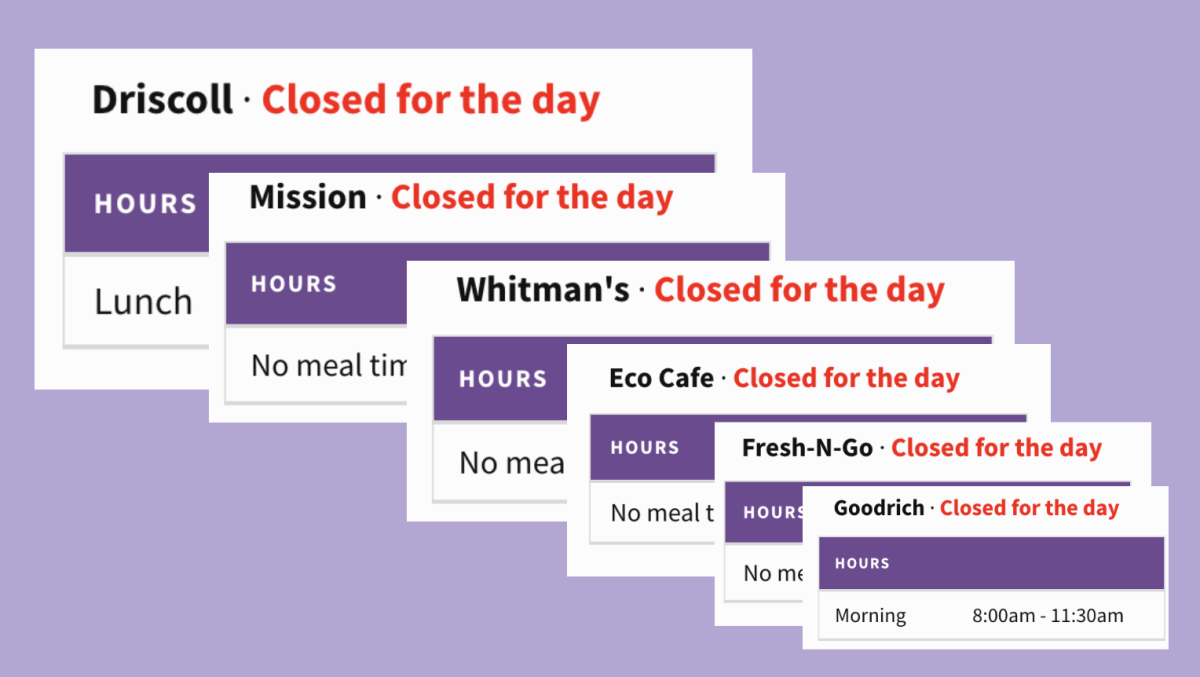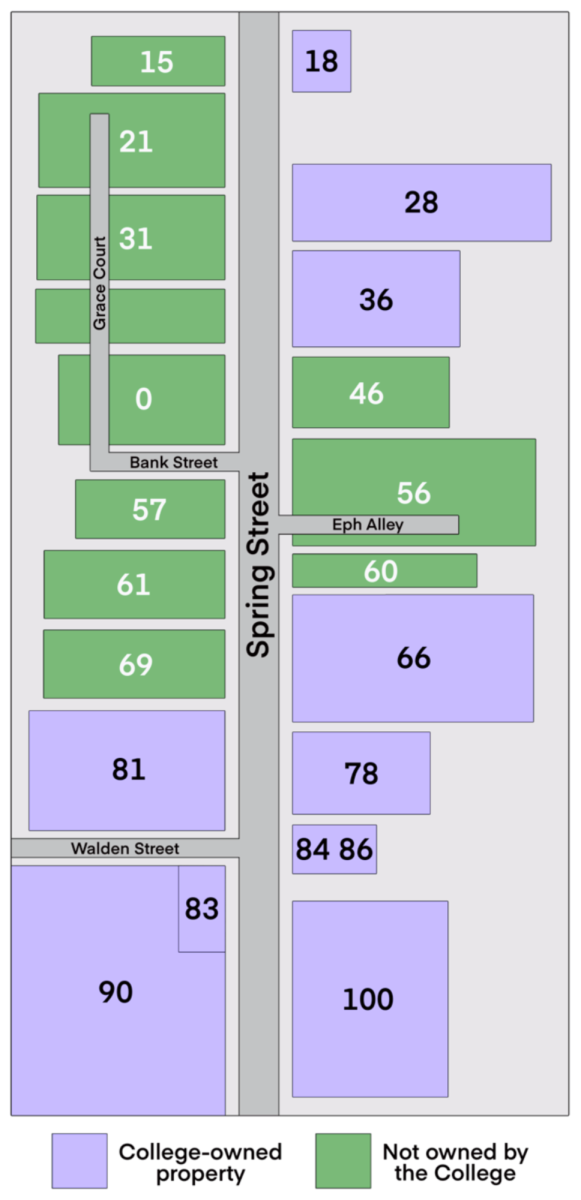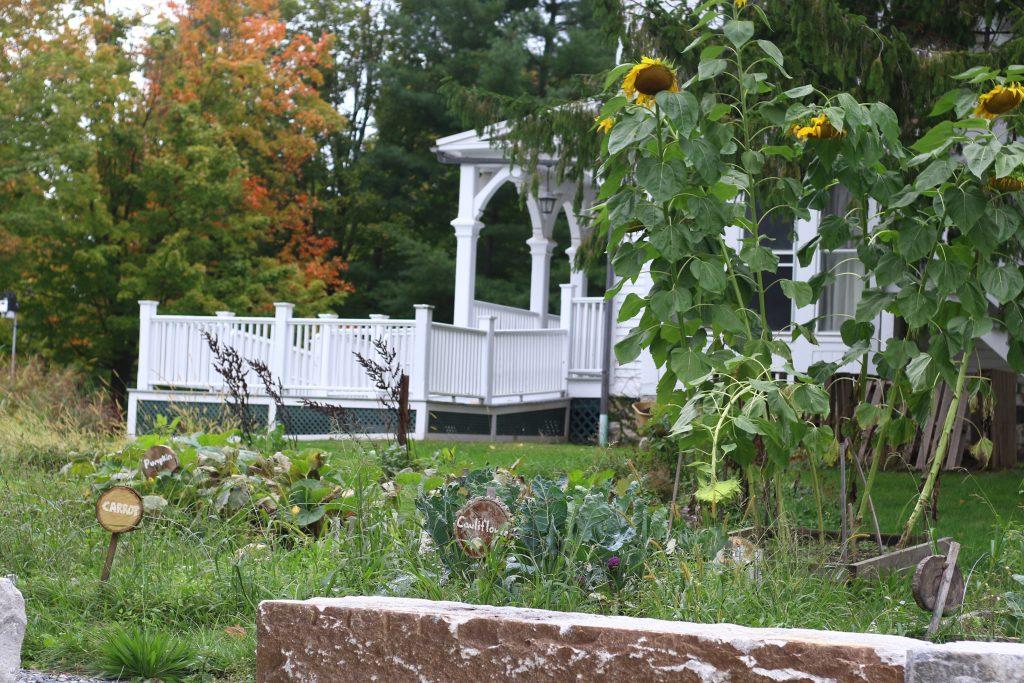
With the arrival of fall weather in Williamstown comes a familiar sight: members of the Williams Sustainable Growers (WSG) harvesting autumn produce from the three gardens on campus. Parsons Garden, adjacent to Dodd Circle, accommodates blackberries, asparagus, annual vegetables and an array of compost bins. The Kellogg Garden at the Class of 1966 Environmental Center is home to rhubarb, strawberries, annual beds, berry bushes, herb beds and an orchard. This cultivation is part of the Living Building Challenge, which requires 35 percent of the site to be used in food production. In total, the gardens are estimated to contain around 80 types of vegetables and herbs, including heirloom species donated by Hancock Shaker Village and the Heritage Wheat Conservancy Project.
WSG maintains Parsons Garden, the Presidential Garden and the beds north of the Environmental Center during the school year. An Environmental Center garden intern manages the other areas, including the orchard and blueberry patches. Interns oversee all three gardens on campus during the summer. In past years, summer garden interns have tended both the College gardens and the garden at Mount Greylock Regional School. For the last few summers, however, interns have worked in conjunction with Williamstown Elementary School (WES) and the Williams College Children’s Center (WCCC). Mike Evans, assistant director of the Zilkha Center for Sustainability Initiatives, highlighted the importance of such collaborative efforts.
“The garden provides opportunities to connect and build community between college students and young kids attending the WCCC summer camps, as well as with community members who tend to the WES gardens in the summer,” he said.
WSG and the Sustainable Garden Project were founded in the spring of 2010. Work on the gardens began in front of Parsons House, where 12 raised beds were constructed in early April of 2010. In May, the group expanded to Kellogg and in September, work on the Presidential Garden began. There are no current plans to alter or expand the existing gardens dramatically, but the Environmental Center is seeking to establish a separate community garden on campus. This garden would be accessible to both College students and local residents, but the project is still in the works.
Though WSG is a student-run organization, its members often work alongside other groups. For instance, they collaborate with dining services on the Sustainable Food and Agriculture Program. One of their joint projects is with Williams Recovery of All Perishable Surplus, a group that packages and delivers unused dining hall food to local communities facing food insecurity. WSG hopes to give a portion of the vegetables they grow to Mohawk Forest, the Roots Rising initiative in Pittsfield, YMCA and other charitable organizations.
Total membership in WSG fluctuates, but there are typically 10 to 20 participants at the work parties. Last spring, the structure of work parties changed: members now devote an hour to discussing topics such as farm workers’ rights, sustainable food systems and the relationship of marginalized communities to food. The group has recently been seeking to encourage the participation of community members, staff and students who do not have experience in gardening.
The educational value of WSG’s garden maintenance makes it worth it for its members. Jessica Muñoz ’19, president of WSG, believes that these gardens prove an opportunity for students to learn about how food travels from the soil to the dinner table.
“Gardens are incredible places to introduce the idea that we can make more informed choices around food, whether it’s in the dining halls, around our kitchen table, with the seeds we plant or the sprays we choose whether or not to use,” she said. “Regardless of whether or not we spent much time in gardens or with plants as kids, there’s something special, and perhaps even important, to witness food growing on a plant.”



